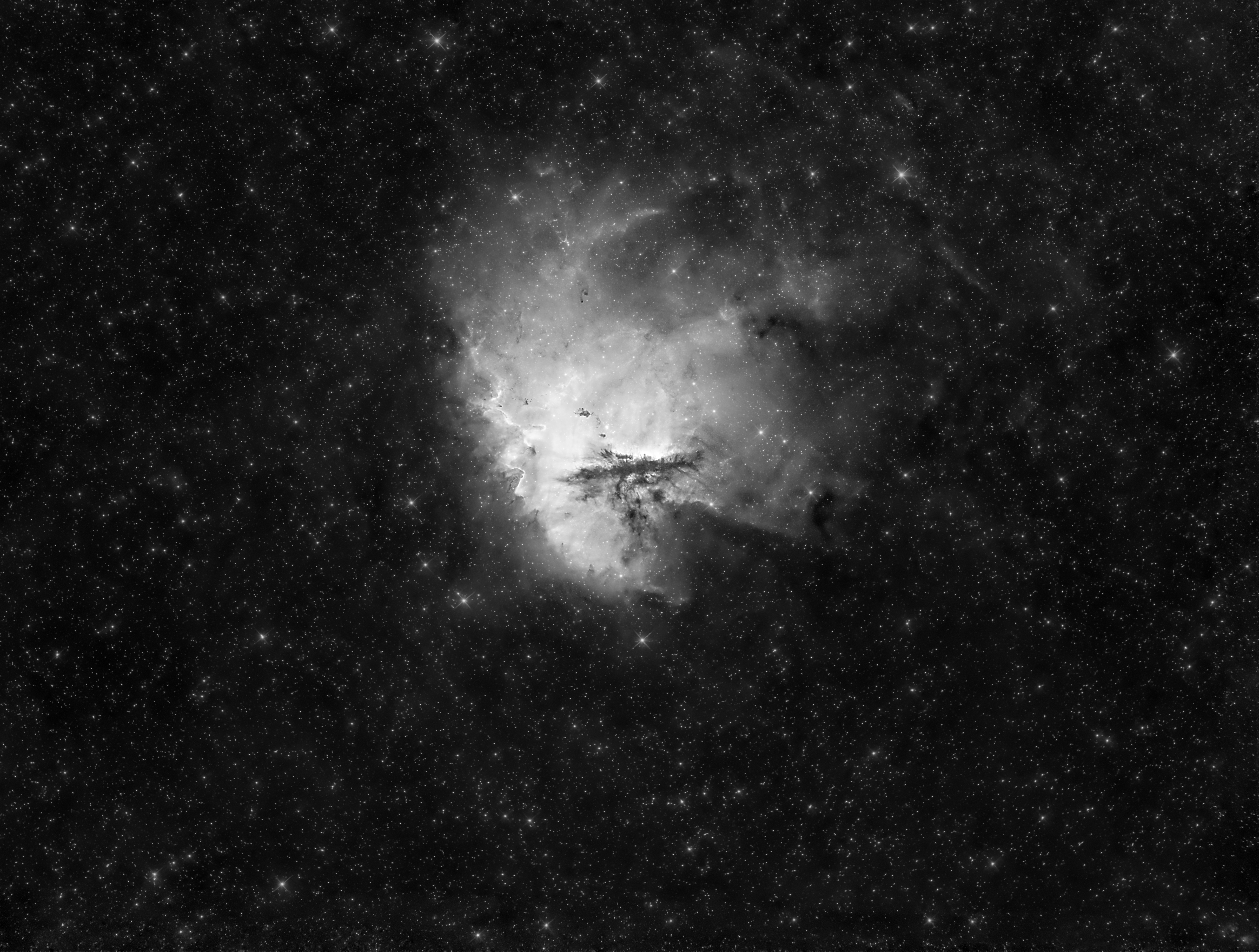
NGC 281, also known as the Pacman Nebula, is part of an H II region in the constellation Cassiopeia. It is located in the Milky Way's Perseus spiral arm. The nebula spans about 20 × 30 arcmin and is located about 9,500 light years distant from Earth. In addition to the designation NGC 281, the nebula is recorded under the catalog numbers LBN 616, Ced 3 and IC 11. Embedded in the Pacman Nebula is the open star cluster IC 1590, whose stars are scattered around the center of the nebula and some of them stand out due to their X-ray emission. The brightest member of IC 1590, the multiple star system BD +55° 191 (HD 5005), serves as the ionizing source of the nebula. The nebula also contains several Bok globules. In those globules signs of star formation have been detected in infrared images. The molecular cloud, the ionized part of which is the emission nebula, is also visible in infrared images.
The nebula was discovered by E. E. Barnard in 1883, who described it as "a large faint nebula, very diffuse".
 NGC 281 - Pacman Nebula, which this image is part of.
NGC 281 - Pacman Nebula, which this image is part of.
Exposure Data